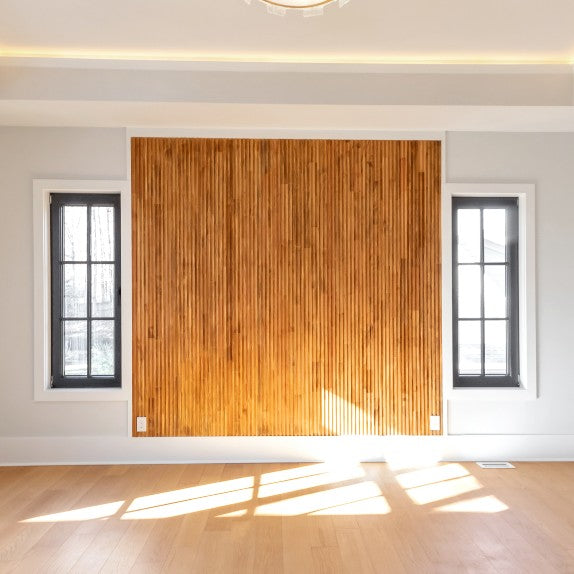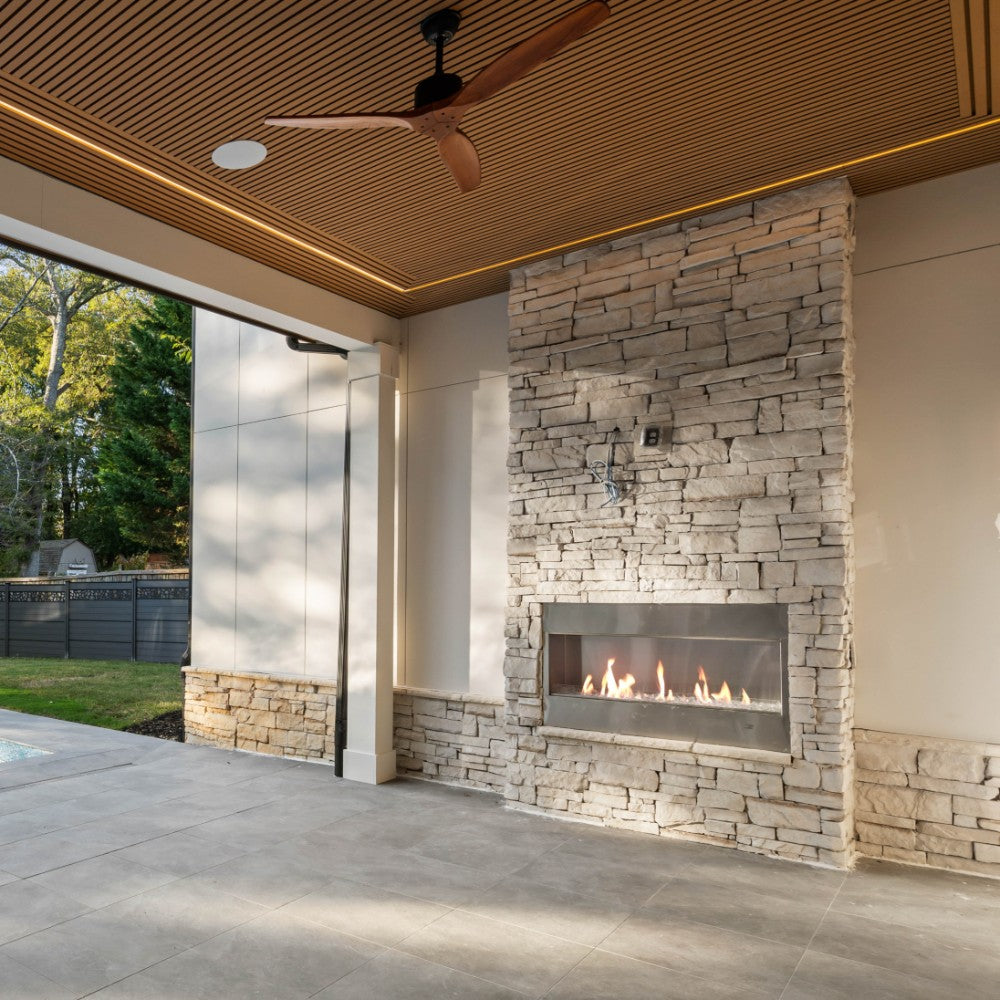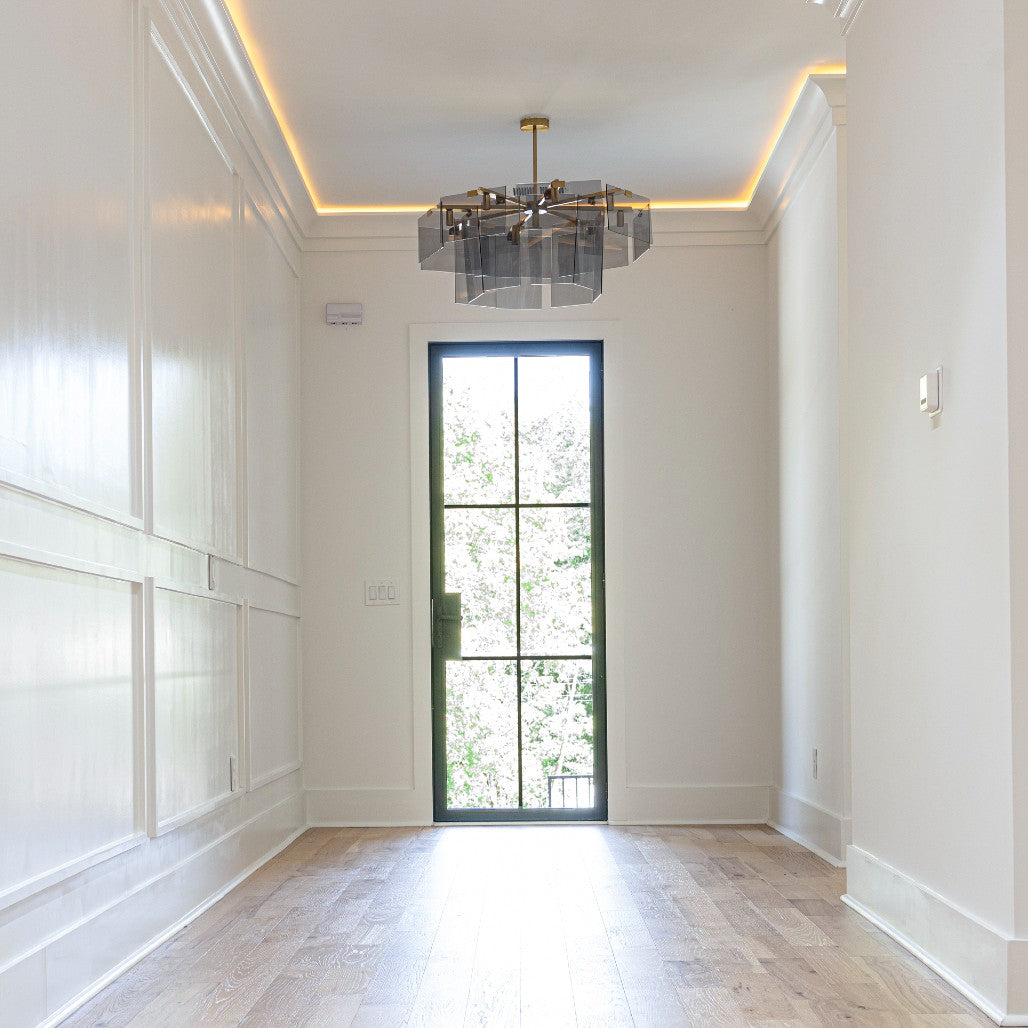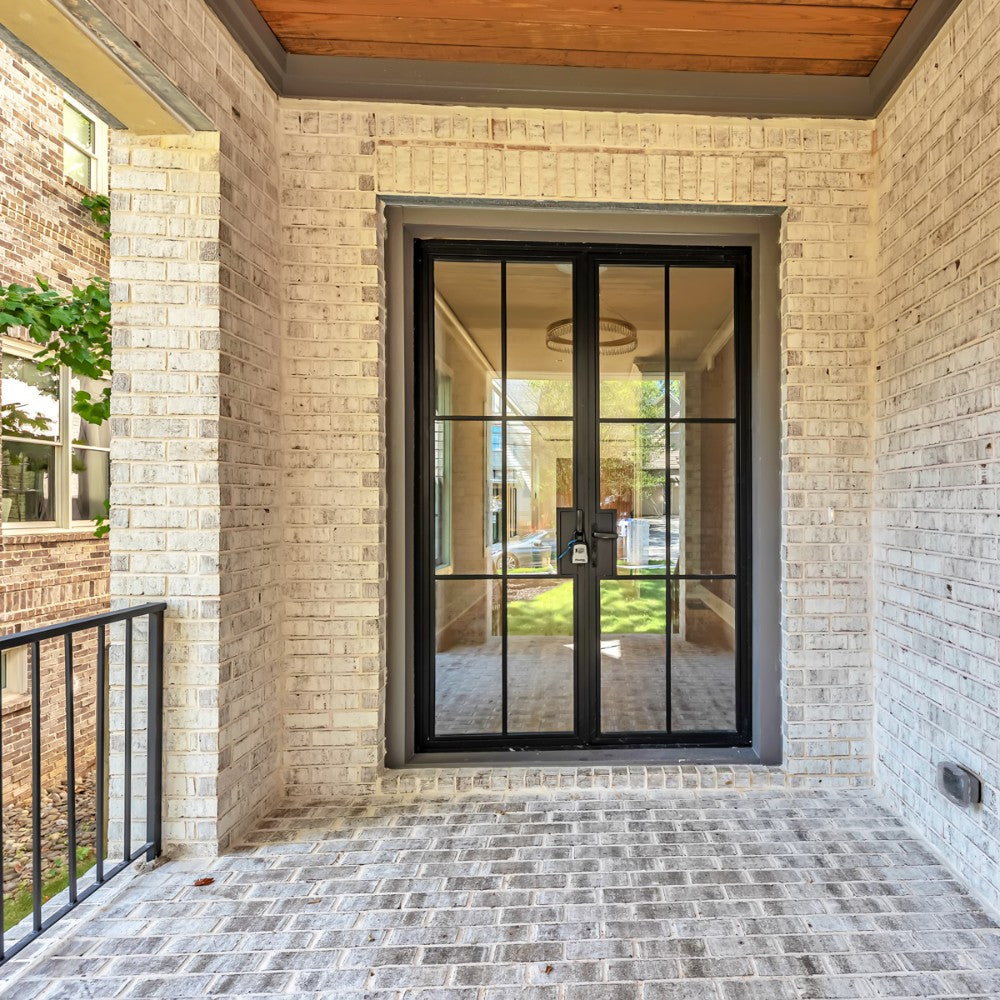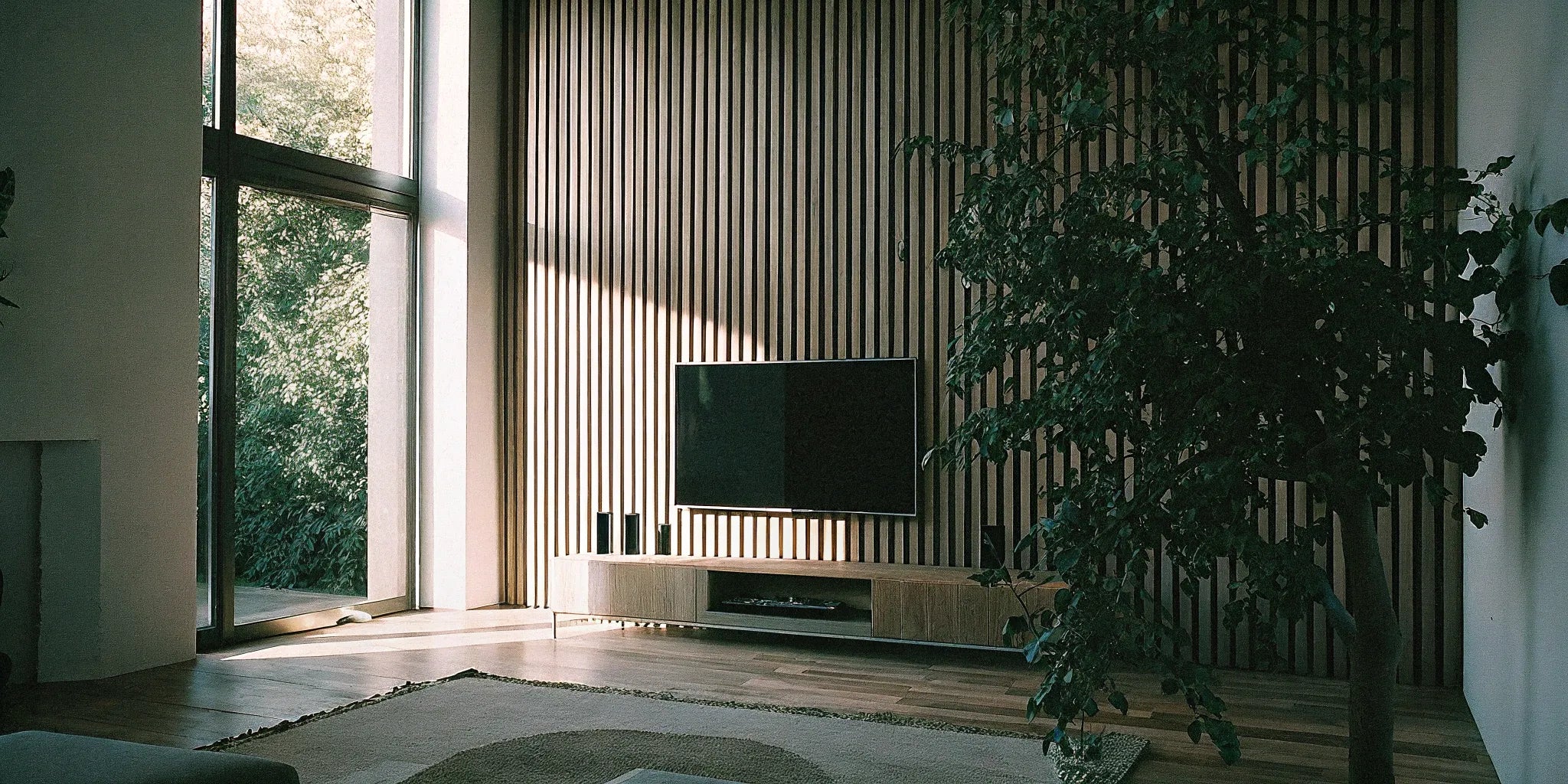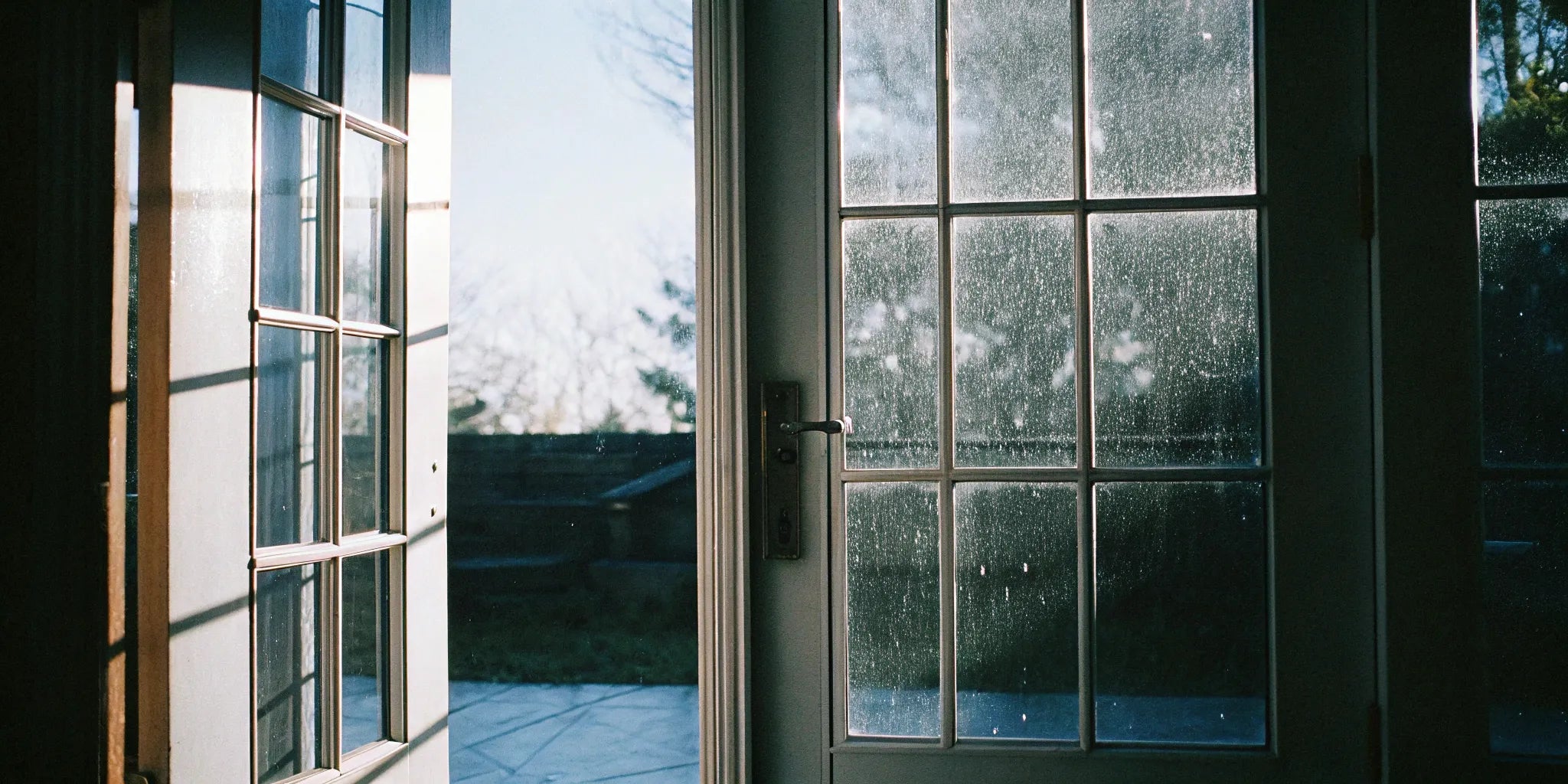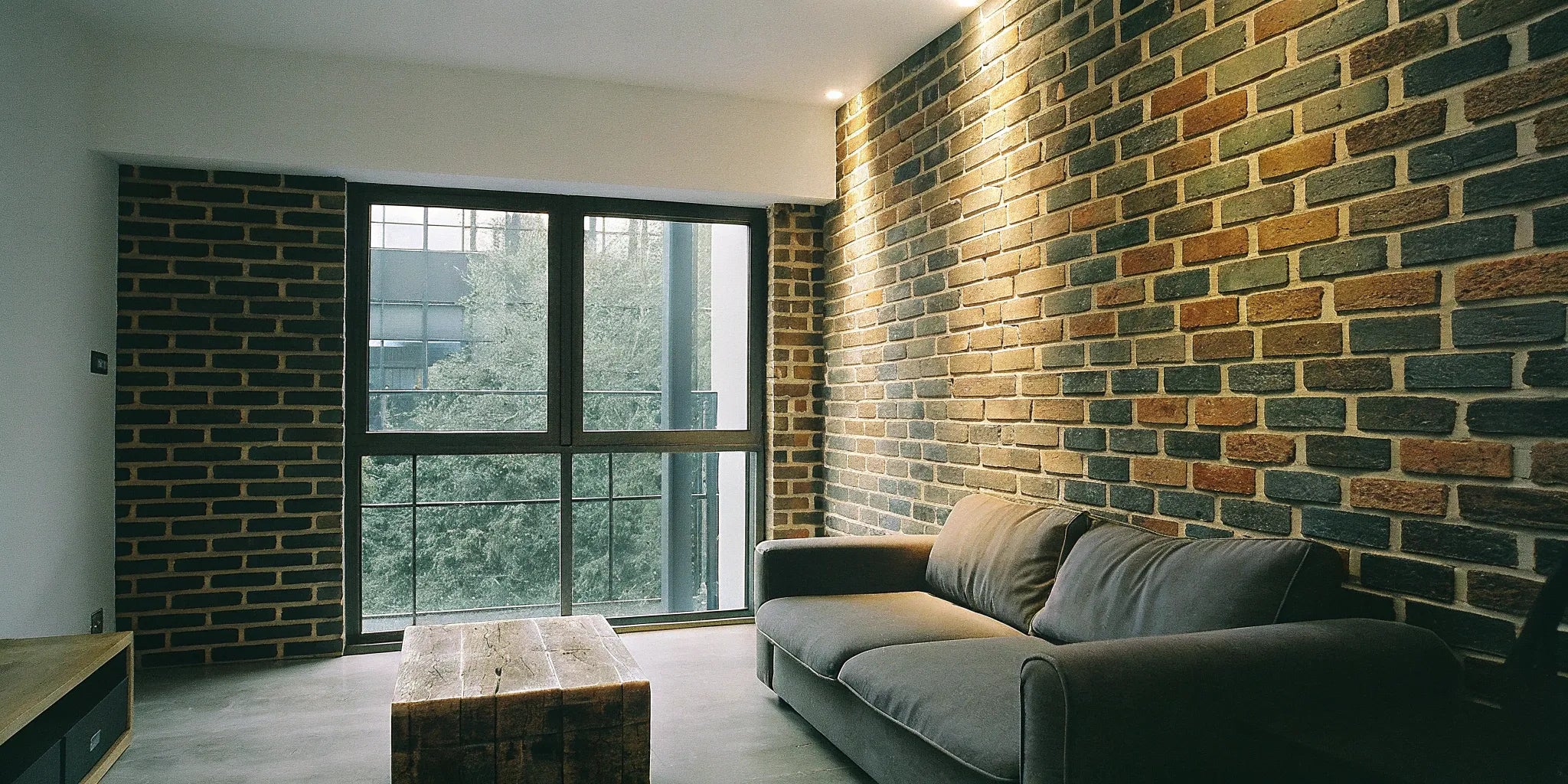
How to Choose & Install Faux Brick Panel
I get it—the word "faux" can make you hesitate. But it's time to forget the flimsy imitations of the past. Today’s high-quality faux brick panel is a total game-changer for interior design. Crafted from durable materials like high-density polyurethane, these panels feature hyper-realistic textures and color variations that truly look and feel like the real thing. They are engineered for a seamless fit, creating a continuous, authentic-looking surface without obvious joints. Choosing faux brick for interior walls isn't settling. It's a smart, stylish, and durable choice for any modern home.
Key Takeaways
- Get the Brick Look, Skip the Masonry: Faux brick panels provide the same warmth and texture as real brick but are far more affordable and can be installed in a weekend, making them a practical choice for any budget or skill level.
- Find the Right Style for Your Space: Whether you want a rustic red or a clean whitewashed look, there's a faux brick panel for your project. Be sure to test samples in your own home to see how the color and texture interact with your lighting and decor.
- Plan for a Professional Finish: The secret to a great result is in the details. Always start with a clean, properly prepped wall, and create the biggest impact by using the panels on a single, well-chosen accent wall.
So, What Are Faux Brick Wall Panels?
If you love the timeless, textured look of an exposed brick wall but aren't ready for a major masonry project, faux brick wall panels are your answer. These are decorative panels designed to mimic the appearance of real brick, giving you that classic industrial or rustic charm without the weight, mess, or high cost. They are a fantastic way to create a stunning accent wall or transform an entire room over a weekend. Because they are so much lighter and more affordable than traditional brick, you can easily add character to almost any interior space, from the living room to the home office.
Modern wall panels are incredibly realistic, capturing the unique colors and textures of authentic brickwork. They offer a practical solution for homeowners and designers who want to make a big visual impact with a straightforward installation process. Whether you’re aiming for a cozy farmhouse kitchen or a sleek, urban loft vibe, faux brick provides the perfect backdrop. It’s a design choice that blends durability with style, making it a go-to for renovation projects of any size.
How Does Faux Brick Compare to Real Brick?
The biggest difference between faux and real brick comes down to installation and cost. Real brick installation is a labor-intensive job that requires a skilled mason, mortar, and significant structural support for your walls. It’s a dusty, time-consuming process. Faux brick panels, on the other hand, offer the same beautiful aesthetic but are designed for simplicity. They are lightweight and easy to handle, making them a perfect project for a confident DIYer. You can achieve a realistic brick look in a fraction of the time and without the structural concerns.
What Are They Made Of (And Will They Last)?
Faux brick panels are typically crafted from high-quality, durable materials like high-density polyurethane, MDF wood, or composite materials. The best panels are designed with interlocking edges or overlapping patterns that cleverly hide the seams, creating a continuous and authentic brick finish once installed. These materials are built to last and stand up to daily life. They are often resistant to moisture, fading, and impact, making them a practical choice for high-traffic areas. Plus, they are simple to clean—usually just a quick wipe-down is all that’s needed to keep them looking great.
Exploring Material Options: Polyurethane, MDF, PVC, and More
Not all faux brick is created equal, and the material you choose plays a big role in the final look and longevity of your project. High-density polyurethane is a popular choice because it’s lightweight yet incredibly durable, and it excels at capturing the intricate textures of real brick. It’s also resistant to moisture, making it a solid option for most rooms. Medium-density fiberboard (MDF) is another common material, often more budget-friendly and easy to paint for a custom finish, though it’s best suited for dry areas. For spaces like bathrooms or kitchen backsplashes, PVC panels are a fantastic choice because they are completely waterproof and easy to clean. Understanding these differences will help you select the right wall panels for your specific room and needs.
Built-In Protection: Mold, Water, and Fire Resistance
Beyond aesthetics, many modern faux brick panels come with practical benefits that add real value and peace of mind. Depending on the material, you can find panels that are moisture-resistant, water-resistant, and even mold- and mildew-resistant. These features are essential for installations in basements, bathrooms, or any area prone to humidity, as they help protect your walls and maintain a healthy indoor environment. Some panels also offer fire-retardant properties, which is an important safety consideration, especially if you’re installing them in a kitchen or near a fireplace. When you’re shopping, it’s worth checking for these built-in protections to ensure your new accent wall is not only beautiful but also durable and safe for your home.
Why You'll Love Faux Brick in Your Home
The advantages of choosing faux brick panels go beyond their good looks. First, the installation is incredibly straightforward, whether you do it yourself or hire a professional. Second, they are a budget-friendly alternative to real brick, saving you money on both materials and labor. Their versatility is another major plus; you can install them in virtually any room to create a feature wall or add texture. Finally, they are low-maintenance and easy to care for, giving you a lasting, beautiful finish without any special upkeep. For contractors and designers, these benefits make them an efficient way to deliver high-impact results for clients.
Beyond Interior Walls: Using Faux Brick for Exteriors
The appeal of faux brick doesn't have to stop at your front door. Many modern panels are specifically designed for outdoor use, offering a fantastic way to enhance your home's curb appeal without the expense and hassle of traditional masonry. When choosing panels for an exterior project, it's crucial to select products rated for outdoor conditions. These durable panels are built to withstand the elements, resisting moisture, UV fading, and temperature changes. Just like their interior counterparts, exterior faux brick is lightweight and much simpler to install than real brick, making it a great option for covering foundations, creating an accent on a porch, or even updating the entire facade. It’s a cost-effective solution that delivers a high-end, realistic look that can completely transform your home's exterior.
How Much Do Faux Brick Panels Cost?
When you compare the numbers, faux brick is the clear winner for affordability. The price per square foot for faux panels is significantly lower than for real brick veneers. But the savings don't stop there. The biggest financial advantage is in the installation. Since you can often install the panels yourself, you can eliminate labor costs entirely. Even if you hire a professional, the job is much faster and simpler, which means fewer billable hours. For trade professionals managing large projects, our bulk discounts can lead to even greater savings, making it an economical choice for commercial and residential builds.
Find Your Perfect Faux Brick Style
Faux brick isn't a one-size-fits-all solution. The beauty of these panels is the sheer variety available, allowing you to capture the exact mood you're going for. Whether you love the look of a historic brownstone or a sleek, modern loft, there’s a style that fits your vision. Let’s walk through some of the most popular options to help you find the perfect match for your space.
Embrace Timeless Style with Red Brick
This is the look that started it all. Classic red brick brings an immediate sense of warmth, history, and character to any room. It’s perfect for creating a cozy fireplace surround, a traditional kitchen backsplash, or an inviting entryway. You can find panels that replicate the deep, rich tones of aged brick or brighter, more uniform reds for a cleaner look. Don’t forget about other classic shades like terracotta or even a slightly weathered gray, which can add a touch of rustic charm without feeling dated. This timeless style works well with both traditional and eclectic decor, making it one of the most versatile wall panels available.
Get a Modern Look with White and Gray
If you’re aiming for a brighter, more contemporary feel, painted brick panels are a fantastic choice. A crisp white brick wall can make a small room feel larger and more open, reflecting light and creating an airy atmosphere. It’s a staple of Scandinavian and coastal design for a reason. Similarly, light gray finishes offer a sophisticated, calming effect that serves as a perfect neutral backdrop for your furniture and art. These styles introduce texture without overwhelming the space with color, giving you a clean canvas that feels both modern and full of character. They are ideal for living rooms, bedrooms, and home offices where you want a serene environment.
Choosing Your Texture: 3D vs. Flat Panels
Beyond color, the texture of your panels plays a huge role in the final look. Your main choice is between 3D panels, which have a raised, tactile surface, and flat panels, which are smooth to the touch. 3D panels are designed to look and feel like real brick, with grooves and imperfections that create authentic shadows and depth. This option is perfect if you want a highly realistic, textured accent wall that adds a lot of character. Flat panels, on the other hand, provide the visual pattern of brick in a sleeker, more graphic style. They are a great choice for a more subtle, contemporary take on the brick look where you want the pattern without the rugged surface.
Specialty Styles: From Colonial to Paint-Ready Finishes
If you have a specific design theme in mind, you can find faux brick panels that capture it perfectly. Some styles are crafted to evoke the feel of a rustic farmhouse, an industrial urban loft, or even a historic Colonial home. But for the ultimate in customization, consider paint-ready panels. These primed, unfinished panels are a blank canvas, allowing you to paint them any color you can imagine. Want a navy blue brick wall for a moody office or a soft blush for a chic bedroom? With a paintable finish, you have complete creative control to match your decor and create a truly one-of-a-kind look, making these wall panels incredibly versatile for any project.
Creating a Rustic or Industrial Vibe
For a look that’s a bit more raw and edgy, rustic and industrial faux brick panels deliver. Think of a converted warehouse loft in the city—that’s the vibe. These styles often feature a mix of earthy tones like deep reds, browns, and tans, with variations in color and texture that mimic reclaimed or weathered brick. The uneven surfaces and grout lines add a layer of authenticity that feels both rugged and inviting. This style is a natural fit for accent walls in living rooms or kitchens, especially when paired with materials like exposed metal, reclaimed wood, and sturdy steel doors to complete the industrial aesthetic.
Does Panel Size Actually Matter?
Once you have a style in mind, it’s time to think about the practical details. Faux brick panels come in various sizes, often in large sheets like 4 ft. x 8 ft., which makes installation much faster than laying individual bricks. Before you buy, measure your wall carefully to calculate the total square footage you need to cover. Pay attention to the dimensions of the panels you’re considering to plan your layout and minimize waste. A well-planned project results in fewer visible seams and a more professional finish. For larger projects, contractors can often get better pricing through a trade program, which is worth looking into.
Understanding Common Panel Dimensions
While there's no single standard size, you'll often find faux brick panels in large sheets, with 4 ft. x 8 ft. being a very common dimension. This size is popular because it aligns with standard building materials, making it easy for contractors to integrate into projects and simple for DIYers to measure and plan for. Larger panels are a huge time-saver, as they allow you to cover a significant amount of wall space quickly, resulting in fewer seams and a more uniform appearance. You can also find smaller sizes, like 2 ft. x 4 ft., which are great for smaller accent areas, backsplashes, or projects that require more intricate cuts. When browsing different wall panel options, always check the product specifications to confirm the dimensions so you can accurately calculate how many you’ll need.
How to Pick the Perfect Color
Choosing the right color can feel like the biggest decision, but it doesn’t have to be stressful. Start by ordering samples to see how they look in your home. The color on a screen can look very different under your room’s specific lighting conditions. Hold the samples up to the wall at different times of day to see how natural light affects the tone. Also, consider your existing decor. Think about your flooring, furniture, and paint colors. Do you want the brick to be a bold statement or a subtle backdrop? The right lighting fixtures can also dramatically change the appearance of the brick, highlighting its texture and warmth.
Beyond Red and White: Exploring Browns, Beiges, and Blacks
While red and white brick have their classic appeal, don't overlook the sophisticated drama of darker, earthier tones. Panels in shades of brown and beige can evoke the feeling of a historic brownstone or a cozy, rustic retreat, adding a layer of warmth that feels both grounded and inviting. For a truly bold statement, black or charcoal brick panels create a powerful focal point perfect for modern, industrial, or even minimalist designs. This choice adds incredible depth and a touch of luxury to a space, making it feel curated and intentional. The beauty of these versatile panels is their ability to completely transform a room's atmosphere, allowing you to set a specific mood, whether you want an intimate den or a sleek, contemporary living area.
Your DIY Guide to Installation and Care
One of the best things about faux brick is how straightforward the installation can be. With a little planning and the right approach, you can create a stunning feature wall in a weekend. This isn’t a project that requires a team of specialists; it’s a satisfying DIY that completely transforms a space. The key is preparation. Taking the time to get your walls ready and understanding the steps before you start makes all the difference between a professional-looking finish and a frustrating experience.
We’ll walk through everything you need, from gathering your tools to the final touches. Think of this as your roadmap to a successful installation. We’ll cover how to prep your surface, the step-by-step process of putting up the wall panels, and some common mistakes to watch out for. Plus, we’ll share some simple tips to keep your new brick wall looking fantastic for years. Ready to get started?
What You'll Need to Get Started
Before you begin, let’s get your toolkit in order. Having everything on hand makes the process much smoother. You’ll need a tape measure, a pencil, a level, a caulk gun, and a saw (a hand saw or circular saw works well) for cutting panels to size. For securing the panels, you’ll want a high-quality construction adhesive and finishing nails. Always double-check the specific adhesive recommended for your panels. The most important first step is to measure your wall accurately to determine how many panels you need. It’s always a good idea to order about 10% extra to account for any cuts or mistakes.
Finishing Touches: Corner Trim and Accessories
The details are what truly make a project shine, and faux brick installation is no exception. To get that polished, professional look, you'll want to think about corner trim and other accessories. These pieces are designed to cover the exposed edges of your panels, especially on outside corners, creating a clean, seamless transition. Without them, you might be left with a raw edge that screams "DIY project." Matching trim ensures your new brick wall looks like an intentional, integrated part of the room's architecture. It’s the final step that ties everything together, ensuring your accent wall looks completely authentic from every angle.
How to Prep Your Walls for Panels
Proper wall preparation is a step you absolutely can't skip. Faux brick panels need a solid, clean, and dry base to adhere properly and stay in place for the long haul. Start by wiping down the wall to remove any dust or grime. If you have any holes or significant cracks, fill them with spackle and sand the area smooth once it’s dry. The surface doesn't have to be perfect, but it should be relatively flat. If you’re working with a freshly painted wall, make sure it has had plenty of time to cure completely before you start applying adhesive.
Installing Your Panels, Step by Step
Start by finding your baseline. Use your level to draw a straight, horizontal line where your first row of panels will sit. Most faux brick panels are designed to be installed from right to left. Orient the first panel so the flat, smooth lip is at the top and the interlocking "fingers" are pointing to the right. Apply a generous amount of construction adhesive to the back of the panel in a zigzag pattern, then press it firmly onto the wall along your baseline. Secure it with a few finishing nails along the mortar lines, then move on to the next panel, interlocking it with the first.
Alternative Installation Methods: Peel-and-Stick, Staples, and Tape
If construction adhesive feels a bit too permanent for your project, you have other great options. The beauty of faux brick is its installation flexibility, which caters to different comfort levels and needs. For an incredibly simple DIY experience, many people opt for peel and stick faux brick wall panels. These come with a pre-applied adhesive backing, so you just remove the protective film and press the panel onto the wall—no caulk gun needed. For a less permanent solution, some lighter panel types can be installed using staples or even heavy-duty double-sided tape. This approach is perfect for renters or anyone who likes to change up their decor frequently, as it allows for easier removal and adjustments down the line.
Common Installation Mistakes to Avoid
Let’s talk about what not to do. The most common mistake is rushing the prep work. Trying to install panels over a dirty or uneven wall will only lead to problems later. Another frequent error is not leaving a small gap for expansion. Many people push the panels tightly against the ceiling or trim, but they need a little space to move with temperature changes. Just pull the panels back slightly from the edge. Finally, always use the recommended adhesive. Using the wrong type can cause the panels to peel away from the wall over time. Taking your time and following the instructions will save you a lot of headaches.
How to Keep Your Panels Looking New
The beauty of faux brick is that it’s incredibly low-maintenance. To keep your wall looking its best, all you really need to do is dust it occasionally with a soft brush or the brush attachment on your vacuum. If you get any scuffs or spills, you can typically wipe them away with a damp cloth and a mild soap solution. Just be sure to avoid any harsh or abrasive chemical cleaners, as they could damage the panel’s finish. With just a little bit of light cleaning, your faux brick wall will maintain its character and charm for years to come.
Faux Brick Panel Ideas for Every Room
One of the best things about faux brick is its versatility. It’s not just for industrial lofts or rustic basements. With the right color and texture, these panels can add character and style to any room in your home. Whether you’re planning a full renovation or just want to create a striking accent wall, here are a few ideas to get you started.
Warm Up Your Living and Dining Room
A faux brick wall can instantly become the focal point of your living or dining room. Imagine a classic red brick wall behind your sofa, adding warmth and a touch of urban charm to the space. Or, picture a whitewashed brick design in your dining area for a cozy, farmhouse feel. Because these wall panels are lightweight, you can easily install them on any wall without needing to reinforce the structure. They provide the perfect textured backdrop for artwork, shelving, or a wall-mounted TV, grounding the room with timeless appeal.
Create a Stunning Kitchen Accent Wall
The kitchen is the heart of the home, and a faux brick accent can make it even more inviting. Use it as a backsplash for an easy-to-clean surface that adds incredible personality. A sleek, gray brick can complement stainless steel appliances for a modern, industrial vibe, while a warmer, terracotta-toned brick brings a rustic, earthy feel to the space. You don’t have to commit to a full wall, either. Even a small accent area, like the wall behind your breakfast nook, can completely transform the room’s atmosphere and make it feel more custom.
Design a Home Office You'll Love
Your home office should be a place that inspires productivity, and the right environment makes all the difference. Swapping a plain, painted wall for a faux brick accent can create a sophisticated and motivating backdrop for your workday. It adds a sense of texture and depth that can make even a small office nook feel more established and distinct from the rest of your home. A darker, more traditional brick can create a studious, library-like feel, while a lighter panel can keep the space feeling bright and open.
How Lighting Can Change Everything
Don’t underestimate the power of good lighting to show off your new brick wall. The right light can highlight the texture and color variations in the panels, making them look even more realistic. Consider installing track lighting or wall sconces that wash light down the wall. This technique, known as "wall grazing," creates soft shadows in the mortar lines and emphasizes the three-dimensional quality of the brick. Pairing your panels with the right lighting fixtures is key to making your new accent wall a true showstopper.
How to Match Your Existing Decor
Integrating a faux brick wall with your current decor is easier than you think. Start by looking at your room’s existing color palette. If your furniture and textiles are mostly neutral, a classic red brick can add a welcome burst of warmth. If your room is already colorful, a white or gray brick wall can provide a textured, neutral background that ties everything together. Think about other materials in the room, too. Faux brick pairs beautifully with natural elements like wood hardwood flooring, metal accents, and plush fabrics.
How to Shop for Faux Brick Panels
Once you’ve settled on a style, it’s time to think about the practical side of things: budget, quality, and where to buy. Making smart choices here will ensure your project looks fantastic without breaking the bank. Think of this as your cheat sheet for getting the best value and a result you’ll love for years to come. From understanding pricing to deciding whether to DIY or call in a pro, these tips will help you shop with confidence and get your project started on the right foot.
What to Expect to Pay for Panels
The cost of faux brick panels can vary, but it’s helpful to know what to expect. Many suppliers price their panels individually, with discounts offered for larger orders. For example, you might see a price of around $100 per panel, which drops by a few dollars when you buy 25 or more. This pricing structure makes it affordable to tackle a small accent wall or a full room renovation. Before you buy, measure your space carefully to determine how many wall panels you’ll need so you can accurately budget for the project and take advantage of any available bulk discounts.
Breaking Down Costs: Per Panel and Per Square Foot
When you compare the numbers, faux brick is the clear winner for affordability. The price per square foot for faux panels is significantly lower than for real brick veneers, but the savings don't stop there. The biggest financial advantage is in the installation. Since you can often install the panels yourself, you can completely eliminate labor costs. Even if you hire a pro, the job is much quicker, which means fewer billable hours. Many high-quality wall panels are priced per piece, often with discounts for bulk orders, making them an economical choice for both small accent walls and large-scale renovations.
Shipping Policies to Consider
When you're sourcing materials for a project, shipping is a big piece of the puzzle. While some big-box stores offer in-store pickup, buying online from a specialized supplier often gives you a wider selection and better quality. Many online retailers, including us at USA Builders Depot, offer fast nationwide shipping, which means you can get premium materials delivered right to your door, no matter where your project is located. For trade professionals managing large jobs, this is a huge advantage. Reliable delivery combined with trade discounts helps keep your project on schedule and on budget, simplifying logistics so you can focus on the build.
How to Spot High-Quality Panels
Not all faux brick panels are created equal. High-quality panels will have a solid, clean base that makes installation straightforward and secure. The real magic is in the details—look for panels where the brick patterns are designed to align seamlessly. This is what creates that convincing, realistic look of a genuine brick wall. Durability is also key, so check what materials the panels are made from. A well-made panel will not only be easier to install but will also stand up to daily life, ensuring your beautiful new wall stays that way.
Look for Warranties and Guarantees
A solid warranty is more than just a piece of paper; it’s a manufacturer's promise that their product is built to last. When you're comparing different faux brick panels, pay close attention to the warranty details. A long-term guarantee, sometimes as long as 25 years, is a clear sign that the company stands behind the quality and durability of its materials. This assurance means you can feel confident that your investment is protected against defects and will continue to look great for years. Think of it as a mark of quality that separates the best products from the rest, giving you the peace of mind that comes from a smart purchase. You can also get a sense of a product's reliability by reading customer reviews from people who have lived with the panels.
Where to Buy the Best Faux Brick Panels
While you can find faux brick panels at big-box hardware stores, it often pays to look at a specialized supplier. Companies that focus on building materials typically offer a wider, more curated selection of high-quality products. At USA Builders Depot, we provide a diverse collection of wall panels designed for durability and style. Shopping with a dedicated supplier also means you get expert advice and service, plus the convenience of fast nationwide shipping directly to your home or job site, which can be a huge time-saver for any project.
Finding Free Resources and Support
Tackling a DIY project can feel a little intimidating, but you’re not on your own. The best suppliers don’t just sell you a product; they provide the support you need to get the job done right. Before you commit to a purchase, it’s a great idea to see what kind of resources the company offers. Look for detailed installation guides, helpful videos, and accessible customer service. These free resources are designed to walk you through the process, answer your questions, and give you the confidence to achieve a professional-looking result without the stress.
Installation Guides, Videos, and Customer Service
Many companies offer free, step-by-step installation guides and videos right on their websites. These are fantastic tools that break down the process into simple, manageable steps, showing you exactly how to handle everything from wall prep to cutting panels. If you hit a snag or have a question that isn’t covered in the guide, a reliable customer service team is invaluable. Being able to call or email an expert for advice can make all the difference. And don’t forget about samples. Ordering a few samples first is one of the best ways to ensure you love the color and texture in your own space before you buy.
Should You DIY or Hire a Pro?
One of the best things about faux brick panels is how user-friendly they are, making them a fantastic option for a weekend DIY project. With the right tools and a bit of patience, you can completely transform a room. However, if you’re tackling a very large area, a wall with tricky angles, or you simply want a guaranteed flawless finish, hiring a professional is a great idea. Contractors have the experience to get the job done quickly and perfectly. If you’re a trade professional yourself, you can even apply for an account to get access to exclusive pricing and services.
When Does Buying in Bulk Make Sense?
If you’re planning a large-scale project, like outfitting an entire basement or renovating multiple rooms, buying your panels in bulk is the smartest way to go. As mentioned earlier, many suppliers offer significant discounts for larger orders, which can lower your overall project cost considerably. This is especially beneficial for contractors, designers, and builders who use these materials regularly. Planning ahead and purchasing all the panels you need in a single order not only saves you money but also ensures all your panels come from the same batch for perfect color consistency.
Style Your Faux Brick Like a Pro
Once your faux brick panels are up, the real fun begins: styling the room. With a few simple design tricks, you can make your new feature wall look like it was professionally designed. It’s all about creating balance, highlighting the texture, and making the wall a seamless part of your home’s decor. These tips will help you pull the entire look together, ensuring your faux brick wall is a stunning focal point, not an afterthought.
How to Mix and Match Textures
The beauty of a faux brick wall is its rich, tactile quality. To make it stand out, play with contrasting textures throughout the room. The rustic feel of brick pairs beautifully with smooth, natural materials. Think about placing a sleek leather couch, a soft velvet armchair, or a polished metal floor lamp nearby. The brick texture adds a rustic feel, while the orange and tan colors bring warmth to the space. Use these faux brick wall panels with wood. Pairing them with warm hardwood flooring or a chunky knit throw blanket creates a cozy, layered look that feels both intentional and inviting. Don’t be afraid to mix modern and rustic elements for a dynamic, personalized space.
Styling Faux Brick in Small (and Large) Spaces
A common worry is that a brick wall will make a room feel smaller, but that’s not the case if you choose the right style. Faux brick panels can bring texture, warmth, and character to your space—without the cost or hassle of real brick. For smaller rooms, like a home office or powder room, opt for lighter-colored panels in white, light gray, or a whitewashed finish. These shades reflect light and create an illusion of spaciousness while still adding that desirable texture. In larger, open-concept areas, you can be bolder with deep reds or industrial grays to create a dramatic and cozy atmosphere. The key is to match the panel’s scale and color to the room’s proportions.
Planning Your Perfect Statement Wall
A faux brick wall works best as an accent, drawing the eye and creating a natural focal point. So, which wall should you choose? Typically, the best statement wall is the one you see first when you walk into a room. It could also be the wall behind your sofa in the living room, the headboard in your bedroom, or the main wall in your dining area. Once you’ve picked your spot, let that wall be the star. Paint the other walls a complementary neutral color to avoid a busy, overwhelming look. You can choose from classic colors like white, gray, and red, or opt for more unusual shades from our wall panels collection to perfectly match your vision.
How to Arrange Furniture Against a Brick Wall
How you arrange your furniture can make or break your new accent wall. Instead of pushing your sofa or console table flush against the brick, leave a few inches of space. This small gap creates a subtle shadow line that emphasizes the wall’s 3D texture and makes it pop. Arrange your main furniture pieces to face or frame the wall, solidifying it as the room's centerpiece. You can also use lighting to your advantage. A track light or a floor lamp angled toward the wall will cast shadows across the brick, highlighting its texture and creating a warm, dramatic effect in the evening.
Common Design Mistakes to Avoid
A few common missteps can keep your faux brick wall from looking its best. The biggest one is overdoing it. Unless you’re aiming for a specific industrial loft or cozy cellar vibe, avoid covering all four walls in brick. An accent wall is almost always more impactful. Another thing to watch for during installation is spacing. Panels need a little room to move with temperature changes. Most people push panels tight to the wall or into the trim. Instead, pull panels back slightly from the edge of the wall, countertop, and ceiling to prevent buckling. Finally, don’t forget to consider the room’s overall style. Make sure the brick finish you choose complements your existing decor for a cohesive look.
Related Articles
Frequently Asked Questions
How realistic do these panels actually look? This is the number one question, and it's a fair one. High-quality faux brick panels are made using molds cast from real brick, so they capture the authentic textures, pits, and imperfections you'd expect. From a normal viewing distance, the detailed coloring and grout lines make them incredibly convincing. The key to a seamless look is choosing panels with interlocking edges, which hide the seams and create the illusion of a continuous brick wall.
Can I install faux brick panels in a kitchen or bathroom? Yes, you can definitely use them in kitchens and bathrooms to add character. Most panels are made from materials that are resistant to moisture, making them a great choice for a kitchen backsplash or a bathroom accent wall. However, they are not designed for areas with constant, direct water exposure, so you wouldn't want to install them inside a shower. Always check the specifications of the specific panel you choose to ensure it's right for your project.
Is this a project a beginner can actually handle? Absolutely. Faux brick panels are designed to be DIY-friendly, which is one of their biggest advantages. If you're comfortable using a tape measure, a level, and a saw, you can achieve a professional-looking result. The process mainly involves measuring, cutting the panels to size, applying adhesive, and securing them to the wall. The most important part is taking your time with wall prep and the first row to make sure everything is straight.
What's the best way to cut the panels to fit around outlets or windows? Cutting panels to fit is simpler than it sounds. For straight cuts, you can use a standard hand saw or circular saw. When you need to cut an opening for an electrical outlet or a light switch, the process is similar. Just measure the location of the box, transfer those measurements to the panel, and use a jigsaw to carefully cut out the opening before you attach the panel to the wall.
Can I paint the panels if I want a different color later on? Yes, and that's one of the great things about their versatility. If you decide to redecorate down the road, you don't have to start over. Most faux brick panels can be painted. To get the best result, you'll want to start by cleaning the surface thoroughly. Then, apply a high-quality primer designed to adhere to the panel's material—whether it's polyurethane or a composite—before finishing with your chosen paint color.


